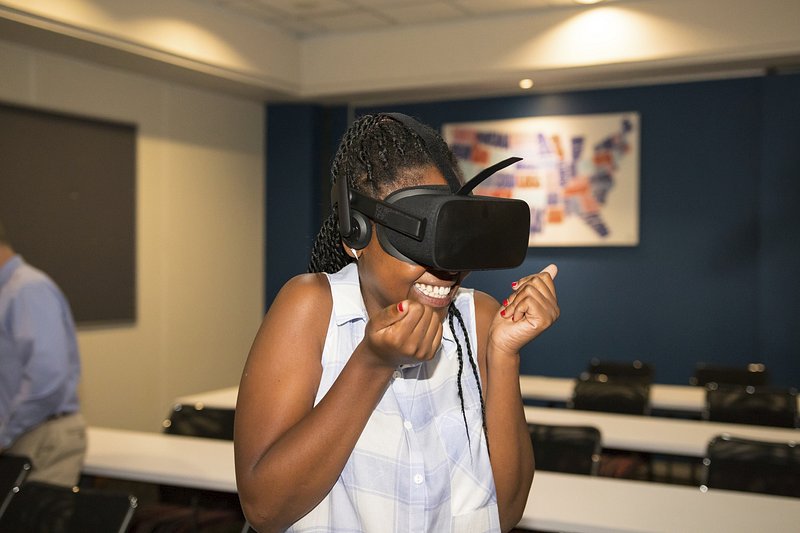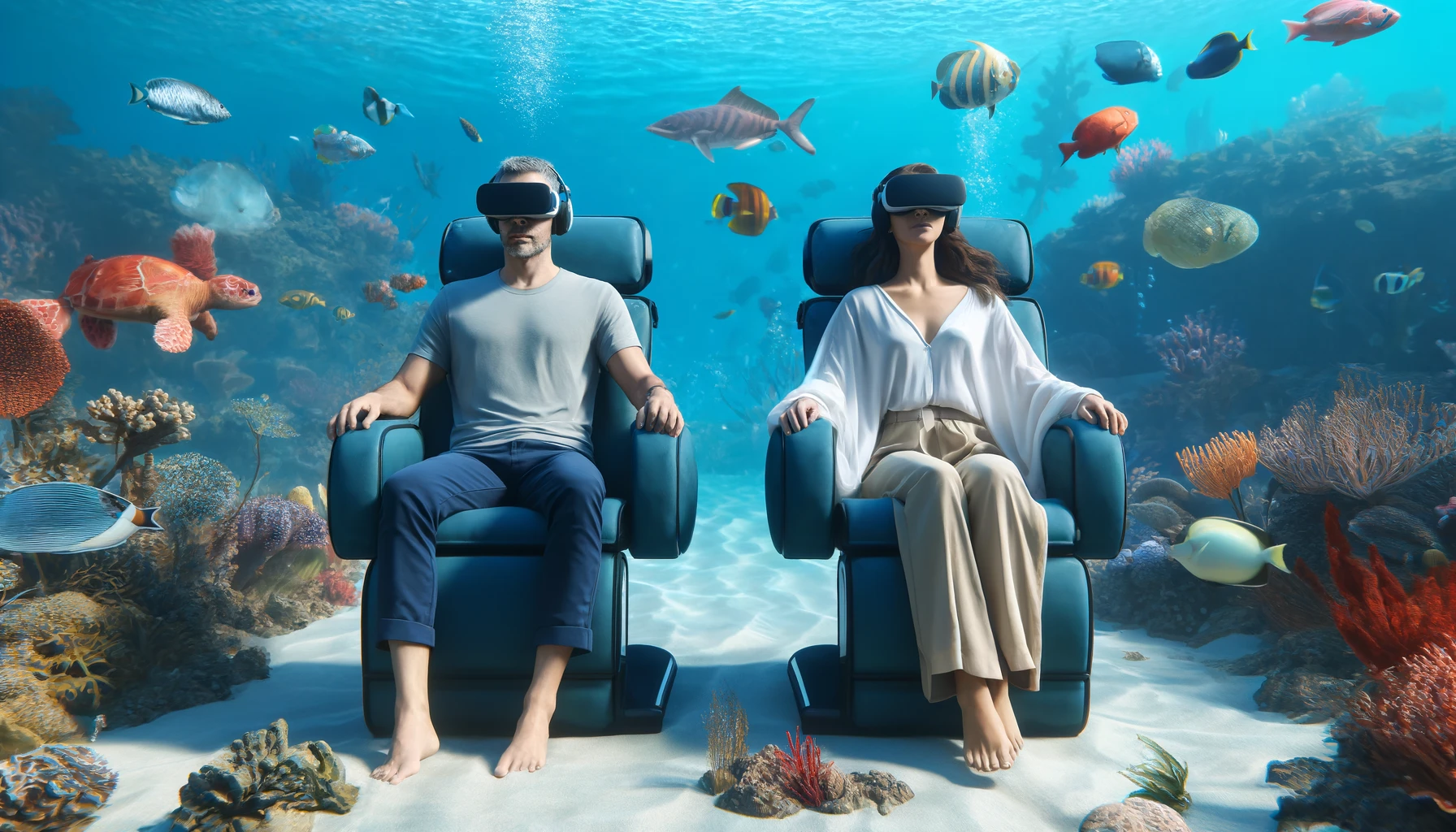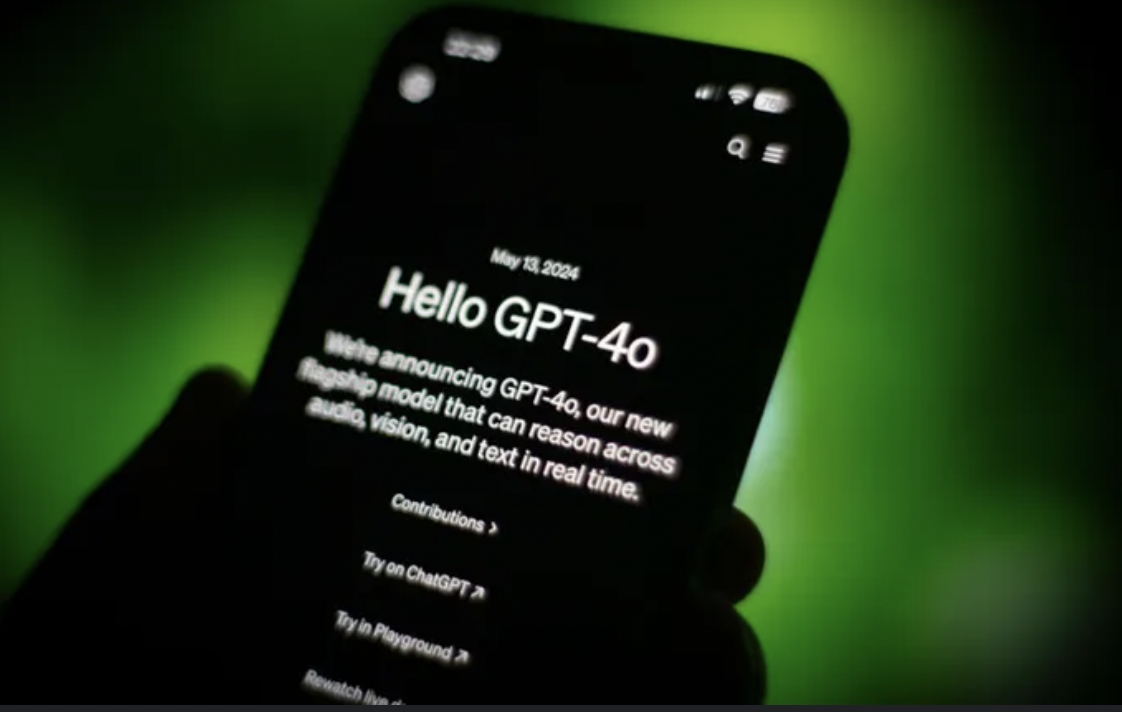Immersive Experiences: Revolutionizing Mental Wellbeing in the Workplace
In the fast-paced and high-pressure environment of modern workplaces, maintaining mental wellbeing is more important than ever. As companies...
2 min read
 Nerdle
:
Oct 13, 2023 8:57:54 PM
Nerdle
:
Oct 13, 2023 8:57:54 PM

Immersive technologies like virtual reality (VR) and augmented reality (AR) are rapidly changing the landscape of education. These technologies allow students to be transported into simulated environments and interact with digital objects and information. This immersive learning experience is proving to have significant benefits for student engagement and comprehension.
VR headsets allow students to be fully immersed in a digital environment. This could involve exploring a virtual recreation of historical sites, interacting with 3D visualizations of complex scientific concepts, or taking part in realistic simulations of real-world scenarios. Studies have found that VR field trips increase student motivation and retention of lesson content (Johnson-Glenberg, 2019). AR overlays digital information and objects onto the physical environment. Students can use AR on mobile devices to interact with virtual models of molecular structures, ancient artifacts, or geography maps. AR allows abstract concepts to be anchored to real-world spaces, deepening student understanding (Dunleavy & Dede, 2014).
These immersive technologies provide multisensory, participatory experiences that were previously impossible or impractical to achieve in the classroom. Instead of passively reading about an environment or concept, students can dynamically interact with it. This active learning boosts student engagement, increasing time spent on learning tasks (Merchant et al., 2014). Immersed in an interactive environment, students intrinsically motivate themselves to keep investigating and discovering.
Immersive learning also facilitates embodied cognition, where knowledge is encoded by physically interacting with an environment. Embodied interactions like gestures, movements, and exploration of a space lead to deeper encoding and retention of information (Lindgren & Moshell, 2011). Evidence shows that knowledge gained from immersive experiences transfers readily to real-world contexts.
The unique capabilities of VR and AR are transforming education across diverse subject areas. These technologies enable personalized learning where students can tackle concepts at their own pace. Scaffolded immersive environments allow safe yet meaningful exploration and experimentation. By leveraging immersion and embodied interactions, educators can excite students’ natural curiosity and ignite their participation in learning.
Immersive technologies are driving the future of education through unparalleled student engagement and embodied learning experiences. As VR and AR devices and platforms become more accessible, they will profoundly reshape teaching and learning across multiple disciplines. Educators can harness these immersive tools to increase student motivation, improve knowledge retention, and create active digital learning environments that mimic hands-on exploration of real-world contexts. The multisensory, participatory power of immersive learning has the potential to make education more captivating, experiential, and effective.
Sources
Dunleavy, M., & Dede, C. (2014). Augmented reality teaching and learning. In J.M. Spector et al. (Eds.), Handbook of research on educational communications and technology (pp. 735-745). Springer.
Johnson-Glenberg, M. C. (2019). Immersive VR and education: Embodied design principles that include gesture and hand controls. Frontiers in Robotics and AI, 6, 81.
Lindgren, R., & Moshell, J. M. (2011). Supporting children’s learning with body-based metaphors in a mixed reality environment. Proceedings of the 10th International Conference on Interaction Design and Children, 177–180.
Merchant, Z., Goetz, E. T., Cifuentes, L., Keeney-Kennicutt, W., & Davis, T. J. (2014). Effectiveness of virtual reality-based instruction on students' learning outcomes in K-12 and higher education: A meta-analysis. Computers & Education, 70, 29–40.

In the fast-paced and high-pressure environment of modern workplaces, maintaining mental wellbeing is more important than ever. As companies...

Artificial intelligence continues to make leaps and bounds, and the introduction of ChatGPT-4.0 stands as a testament to this progress. This latest...

In the ever-evolving landscape of mental health treatment, virtual reality (VR) has emerged as a powerful tool, offering innovative solutions for...